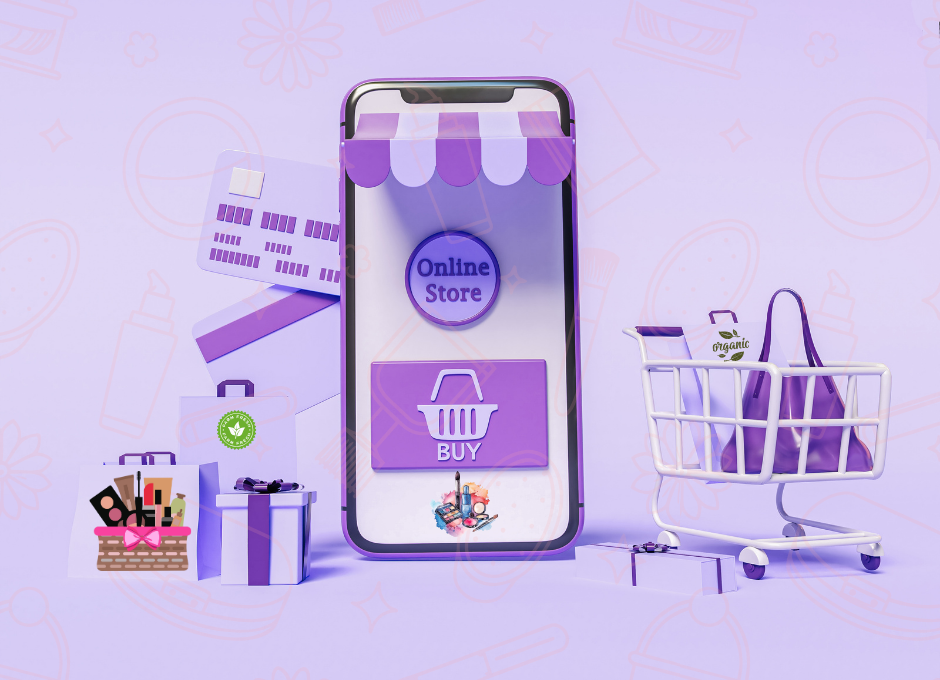Introduction to fundamental marketing concepts for handmade cosmetics
Introducing fundamental marketing concepts specifically tailored for the handmade cosmetics industry is crucial for distinguishing your brand and products in a saturated market. Handmade cosmetics, known for their uniqueness, quality, and personal touch, require a strategic approach to marketing that leverages these strengths (Scale Up Collective) (Digital Agency Network) (ICMR India). Here are key concepts to consider:

Creating a compelling brand identity and narrative is essential. For handmade cosmetics, this often involves telling the story behind the products – the inspiration, the person or team who makes them, the sourcing of materials, and the craftsmanship involved. This narrative can create an emotional connection with customers, emphasizing the authenticity and uniqueness of the products.

Identify and understand your target audience deeply. Who are they? What are their needs, preferences, and values? Handmade cosmetics often appeal to consumers looking for natural, ethical, and cruelty-free products, so marketing efforts should speak directly to these values.

Highlight what makes your products different and better than conventional options. This could be unique ingredients, customization options, packaging, or the product’s origin story. Differentiation is key in a crowded marketplace.

Leverage content marketing to educate your audience about the benefits of your products and the values of your brand. This can include blog posts, tutorials, ingredient spotlights, and customer testimonials. High-quality, informative content can help build trust and authority in your niche.

Social media is a powerful tool for handmade cosmetics brands. Platforms like Instagram and Pinterest are particularly effective for showcasing the visual appeal of cosmetics. Regular posting, engaging with your audience, and using relevant hashtags can help increase visibility and attract a following.
Partnering with influencers who share your brand’s values can help reach a wider audience. Choose influencers whose followers match your target market. Micro-influencers, with smaller but highly engaged audiences, can be particularly effective for niche products like handmade cosmetics.

For many handmade cosmetics brands, online sales are crucial. Ensure your website is user-friendly, visually appealing, and optimized for search engines (SEO). High-quality product images, detailed descriptions, and easy navigation are essential for converting visitors into customers.
Provide exceptional customer service to create a positive buying experience. This can include personalized notes in orders, responsive customer support, and loyalty programs. Satisfied customers are more likely to become repeat buyers and recommend your products to others.

Many consumers of handmade cosmetics value sustainability. Highlight your brand’s commitment to sustainable practices, whether in sourcing, production, packaging, or shipping. This not only appeals to environmentally conscious consumers but also aligns with broader market trends towards sustainability.

Use analytics tools to track the performance of your marketing efforts and gather customer feedback regularly. This data can help you understand what’s working, what’s not, and how you can improve your marketing strategy over time.
Implementing these fundamental marketing concepts requires time, effort, and often a bit of trial and error. However, by staying true to your brand’s values and focusing on creating genuine connections with your audience, you can successfully market your handmade cosmetics and build a loyal customer base.

Glossier, a beauty brand that started as a blog, excels in creating a strong brand identity centered around real beauty and inclusivity. They’ve masterfully used storytelling through social media and their blog to share user experiences, beauty tips, and behind-the-scenes content, making their customers feel like part of a community. This approach has cultivated a loyal following and strong brand recognition.
The Ordinary has revolutionized skincare by offering high-quality, active ingredients at an affordable price point. By understanding their target market’s desire for transparency and efficacy in skincare without the high markup, they’ve positioned themselves as a go-to brand for informed consumers seeking value and performance.
Fenty Beauty by Rihanna disrupted the beauty industry by launching a foundation line with 40 (now 50) shades, catering to a wide range of skin tones often overlooked by other brands. This move not only set a new standard for inclusivity in beauty but also significantly differentiated Fenty Beauty in a crowded marketplace.
Tatcha uses content marketing effectively by sharing detailed blog posts and videos about Japanese beauty rituals, the natural ingredients they use, and the science behind their products. This educational content helps build a deeper connection with their audience, establishing Tatcha as a brand that values tradition, research, and efficacy.
NYX Cosmetics leverages social media to engage with its audience through vibrant product showcases, tutorials, and user-generated content. Their hashtag campaigns encourage fans to share their own looks using NYX products, creating a vast library of real-world applications that inspire others and promote a sense of community.
Morphe has harnessed the power of influencer partnerships by collaborating with makeup artists and beauty influencers to create co-branded products. These collaborations have allowed Morphe to tap into the influencers’ sizable followings, boosting brand visibility and credibility.
L’Occitane en Provence offers a premium customer experience both online and in-store, with beautifully designed packaging, personalized recommendations, and a generous loyalty program. Their focus on Provencal beauty traditions and natural ingredients, combined with exceptional service, fosters customer loyalty and repeat business.
Aveda is committed to sustainable practices, using naturally derived ingredients, responsible packaging, and renewable energy sources in manufacturing. Their transparency and commitment to environmental stewardship appeal to eco-conscious consumers, differentiating Aveda in the competitive beauty market.

In today’s dynamic market, the success of a cosmetics business hinges not just on the quality of its products but also on the effectiveness of its sales techniques and customer engagement strategies. This chapter delves into the most effective approaches to connect with customers and drive sales, offering actionable insights for entrepreneurs in the cosmetics industry.
The foundation of any successful sales strategy is a deep understanding of your target audience. Who are they? What are their needs, preferences, and pain points? Tailoring your sales approach to address these specific aspects can significantly increase its effectiveness. For instance, if your cosmetics brand focuses on organic products, highlighting the benefits of natural ingredients to health-conscious consumers can resonate well.
In the age of digital commerce, personalization has become a key driver of customer engagement. Leveraging data analytics allows businesses to offer personalized recommendations, promotions, and content to individual customers, even on a large scale. This approach not only enhances the customer experience but also increases the likelihood of conversion and loyalty.
Social proof, such as customer reviews, testimonials, and user-generated content, plays a crucial role in influencing purchasing decisions. Showcasing positive feedback from satisfied customers can build trust and credibility, encouraging others to try your products. Social media platforms offer a prime venue for sharing this social proof, amplifying its impact.
Content marketing offers a way to engage customers beyond traditional sales pitches. By providing valuable content that educates, entertains, or informs—such as makeup tutorials, skincare tips, or behind-the-scenes looks at product development—brands can build a deeper relationship with their audience. This strategy not only fosters brand loyalty but also positions your brand as a trusted authority in your niche.
An omnichannel approach integrates various sales channels—online, in-store, social media, mobile—to provide a seamless and consistent customer experience. By allowing customers to interact with your brand through multiple touchpoints, you can enhance engagement and boost sales. For example, a customer might discover your product on Instagram, research it on your website, and finally make a purchase in your physical store.
Creating a sense of community around your brand can lead to higher levels of engagement and loyalty. This can be achieved through interactive social media campaigns, loyalty programs, and events that encourage customers to connect with your brand and with each other. A strong community can also serve as a powerful advocacy group, promoting your products through word-of-mouth.

Excellent customer service is paramount for retaining customers and encouraging repeat business. Offering multiple channels for customer support, such as live chat, email, and phone, and ensuring timely and helpful responses can significantly enhance customer satisfaction. Furthermore, actively seeking feedback and showing that you value and act on customer input can strengthen the customer-brand relationship.

Summary
In this chapter, we’ve delved into the fundamentals of marketing and sales strategies, specifically tailored for the handmade cosmetics industry. The chapter is designed to provide a comprehensive guide to entrepreneurs looking to carve out a niche in this competitive market, focusing on leveraging the unique qualities of handmade products to build a strong, distinctive brand.
We started by emphasizing the importance of Brand Identity and Storytelling, illustrating how a compelling narrative can foster a deep connection with customers. Brands like Glossier have exemplified this by sharing their journey and ethos, creating a community of loyal customers.
Understanding your Target Market was identified as a crucial step, with a focus on consumers who prioritize natural, ethical, and cruelty-free products. This segment’s preferences and values guide targeted marketing efforts, as seen in the strategies employed by Lush.

Product Differentiation was highlighted as a key to standing out in the saturated market. We discussed how innovation in product formulation, ethical sourcing, and customization options can distinguish a brand. Fenty Beauty’s inclusive approach to makeup shades serves as a prime example of effective differentiation.
The role of Content Marketing in educating and engaging your audience was examined, with Tatcha’s content strategy serving as an inspiration for how to build brand authority and connection through valuable, informative content. Social Media Marketing was identified as a potent tool for visual storytelling and engagement, exemplified by NYX Cosmetics’ vibrant social media presence.
Influencer Partnerships, E-commerce Optimization, Exceptional Customer Service, Sustainability Practices, and the use of Analytics and Feedback for continuous improvement were all discussed as essential components of a successful marketing strategy. Each of these elements contributes to building a strong brand presence, engaging directly with the target audience, and ultimately driving sales and growth.
Throughout the chapter, real-world examples from successful brands in the cosmetics industry were provided to illustrate how these strategies can be implemented effectively. From Morphe’s influencer collaborations to L’Occitane en Provence’s focus on customer experience, these case studies offer valuable insights for entrepreneurs.
Tips and Tricks


Implementing these tips and tricks in your marketing strategy for handmade cosmetics can help you build a strong brand presence, deeply engage with your target audience, and drive sales. Remember, the key to successful marketing is consistency, authenticity, and a willingness to adapt based on feedback and changing market trends.